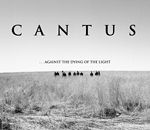| Columns Retired Columns & Blogs |
Editor's Choice: Stereophile's Sampler & Test CD Track 11
[11] Debussy: Invocation (from Against the Dying of the Light..., Cantus CTS-1202)
Performers: Cantus (Brian Arreola, Michael Hanawalt, Albert Jordan, Lawrence Wiliford, Peter Zvanovec, tenors; Kelvin Chan, Adam Reinwald, Paul Wilson, baritones; Alan Dunbar, Erick Lichte, Timothy Takach, basses; with Charles Kemper, Steinway piano)
Recording Venue: The Chapel of the Good Shepherd, Shattuck St. Mary's School, Faribault, Minnesota
Recording Dates: March 18-22, 2002
Producers: Cantus
Microphones: DPA 4011 ½" cardioids (voices, ORTF pair); two DPA 4006 ½" omnis with diffuse-field nosecones (voices, spaced pair); two Neumann TLM103 1" cardioids (piano, close ORTF pair)
Mike Preamps: two Millennia Media HV-3Bs (DPA mikes), Forssell M-2a (Neumanns)
A/D Converters: two dCS 904Ds (24-bit, voices), Digital Audio Labs CardDeluxe (24-bit, piano close pair) at 88.2kHz
Recorders: Nagra-D (DPA omnis); Tascam DA-38 with PrismSound MR-2024T bit-splitter (DPA cardioids); Dell Pentium 3 running CoolEdit 2000 (piano, close pair)
88.2kHz/44.1kHz downconversion: dCS 972
Mixer: Sonic Solutions Digital Audio Workstation (6 channels)
Equalization & 24-16-bit Noiseshaping: Z-Systems rdp-1 with POW-R algorithm
 If I have an overall recording philosophy—other than being true to the musicians' intentions—it is that the more I can do to put off quality-making decisions to the comfort of my own listening room, the better. All I want to focus on at the sessions are the placement of the mikes, the laying down of the mike signals on digital tape, and ensuring that none of the channels hard-clips. Everything else—mixing, equalization, changing the time alignment of the mikes—I much prefer to do under low-stress, familiar conditions back in my listening room.
If I have an overall recording philosophy—other than being true to the musicians' intentions—it is that the more I can do to put off quality-making decisions to the comfort of my own listening room, the better. All I want to focus on at the sessions are the placement of the mikes, the laying down of the mike signals on digital tape, and ensuring that none of the channels hard-clips. Everything else—mixing, equalization, changing the time alignment of the mikes—I much prefer to do under low-stress, familiar conditions back in my listening room.
This recording was a case in point. Expecting to record an a cappella male-voice choir, I was informed when I arrived in Minnesota that, for the first evening's session, the choir would be accompanied by a piano. The preceding afternoon session and the following morning session would be just the choir, so I placed the mikes to best capture the voices, leaving the piano to its own devices. It therefore sounded a bit distant over the main microphone pairs, so I set up a close ORTF pair of cardioids facing down at the Steinway's soundboard and recorded them on my PC's hard drive, using the analog inputs of a CardDeluxe soundcard. Because this doesn't have a digital input that can be used simultaneously with the analog inputs, the card was designated the Clock Master and the vocal-mike ADCs were slaved to its digital output via a Z-Systems rdp-1, used to clean up the timing of the S/PDIF datastream.
Back home, I could experiment with the level of the close-miked piano and its timing vis-à-vis the main pairs to give the best integration. I ended up with the piano's level 12dB down and its stereo image panned to the correct position in the soundstage so that it integrated with the sound of the singers.
What you should hear: The mix of distant and spot mikes gives the Steinway a brilliant quality, but not one that overpowers the voices. The small hall provides rich support of Brian Areola's solo in the bridge before the hushed key change on the piano heralds the choir's re-entry. As with track 10, the singers should extend across the stage, with the piano extending from the center of the soundstage to the right-hand speaker position.
- Log in or register to post comments




































